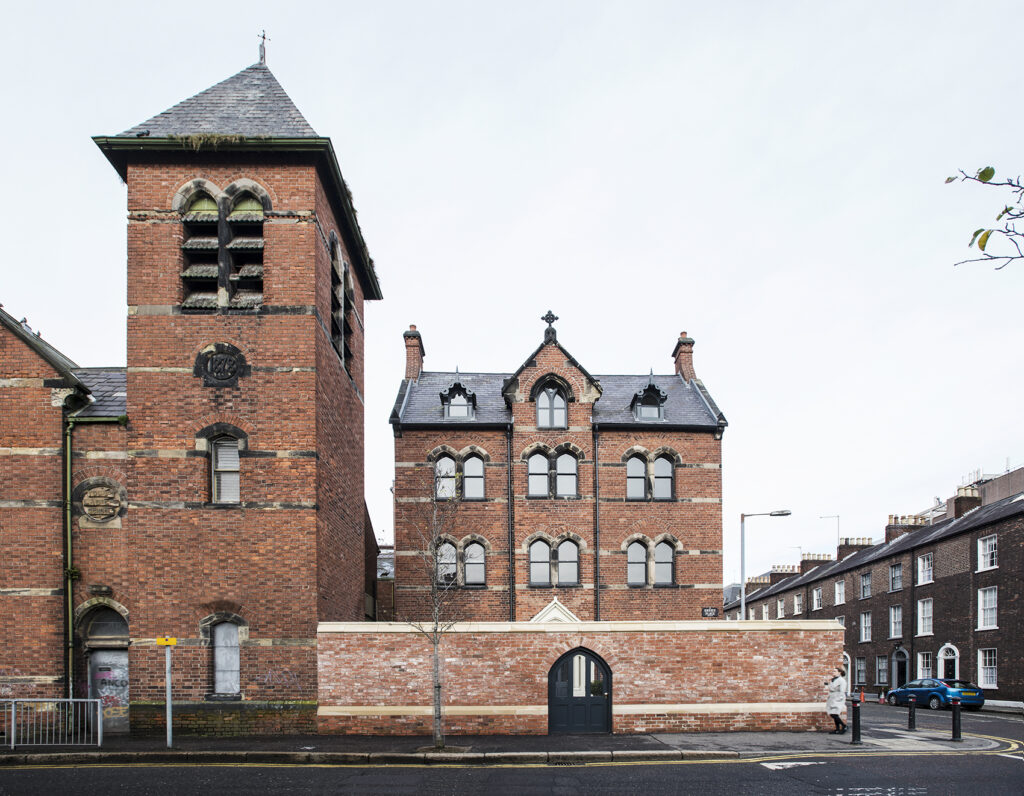
The global pandemic has unveiled and accelerated trends that will have lasting impact on the built environment and architecture of Belfast.
With effective vaccines now being delivered, the time will soon come when the city must consider the shape of post-pandemic regeneration.
Architecturally, regeneration is re-design closely linked to reflecting a sense of place – defining exactly what that means for Belfast is crucial.
The Belfast Agenda, supported by Belfast City Centre Regeneration and Investment Strategy, sets a target of an additional 66,000 residents and 30,000 homes to help create a vibrant, functioning city centre.
Belfast City Council is working with the Department for Communities, NI Housing Executive, Housing Associations and the private sector to bring forward proposals for a blend of coherent and inclusive mixed-use developments.
The regeneration of the Linen Quarter, where Hamilton House is located, is a key project within the regeneration strategy. Home to many of the city’s main business and public sector headquarters, as well a growing number of hotels, it is also beside the site of the new £150m Belfast Transport Hub.
Hamilton Architects carried out a £1.1m restoration of the former St Malachy’s Convent of Mercy in the spirit of the Linen Quarter Vision. Once on the register of buildings at risk, it has found new purpose and longevity as One Sussex Place private rental apartments.
Securing a building’s future in a practical, sustainable way, while remaining sensitive to its aesthetic and listed status, is an architectural juggling act. It is one we have mastered in such diverse conservation projects as Enniskillen Castle Museum Visitors Centre, Crumlin Road Gaol, Stormont Buildings, Cultra Manor and John Bell House.
Politicians, planners and developers face their own juggling act in regard to city centre regeneration, a term which can bring with it the whiff of gentrification and economic disenfranchisement.
Regeneration promises to deliver investment, money, footfall and liveliness into the city centre and the small cafes, pubs and shops around it. Employment, health, education also come into the mix, as well as improved public realm and infrastructure services.
Yet many city centre communities with a sense of traditional ownership feel they have yet to share in the economic success and increased amenity of a post-conflict Belfast.
In the United States, we have seen Community Development Corporations acquire existing soon-to-be des res properties to produce affordable housing for locals. This has coincided with a shift to supporting home ownership, local artisan businesses, and community cultural and artistic heritage.
The involvement of community leaders in the decision-making process in Belfast will ensure that new city centre residential communities integrate successfully alongside longstanding communities.
We must create housing to attract young professionals – and affordable housing for the communities which are already there. We must create amenities which lure tourists – and safeguard the amenity of city centre residents and the unique historical character of Belfast.
There are no easy answers, but find answers we must. Neighbourhoods and demographics are continually changing and evolving – the global pandemic has accelerated this process.
The challenge to all of us will be to work together to keep the heart in the heart of Belfast.
Paul Millar
Partner, Hamilton Architects

